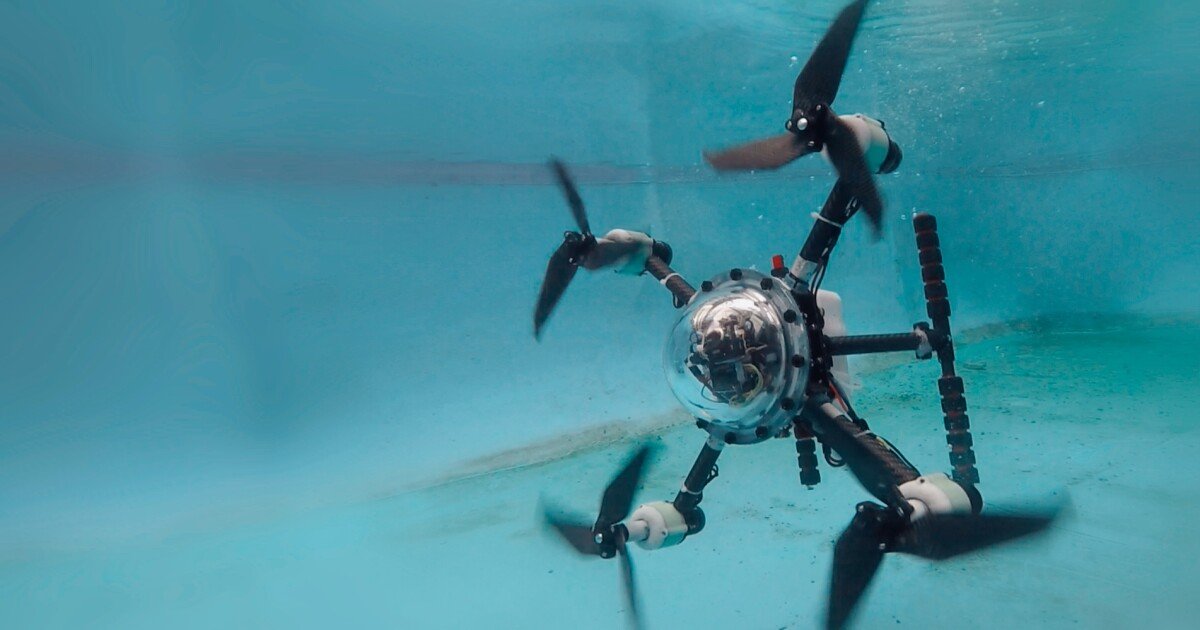“Exploring the Underwater World with TJ-FlyingFish: Drone Flies and \”Swims\” Above and Below the Surface”
While air drones can travel great distances quickly, sea drones can explore underwater environments. The TJ-FlyingFish offers the best of both worlds as it is a flying quadcopter that is also capable of weaving its way through the deep depths.
Currently in working prototype form, the TJ-FlyingFish was developed by a team of scientists from China’s Shanghai Research Institute for Intelligent Autonomous Systems, Tongji University and the Unmanned Systems Research Group at the Chinese University of Hong Kong.
At first glance it looks like any other quadcopter – it consists of a central curved body and four arms, each of which has a propulsion unit (a motor/propeller module) at the end. However, each power unit contains a special two-speed gearbox, and the arm it is mounted on can rotate independently relative to the rest of the drone.
When the aircraft is in flight, all four units face up and rotate their propellers at the higher of the two speeds. Once it lands on the water, the units rotate down and then rotate at a lower speed, pulling the drone below the surface. In order to move both vertically and horizontally once fully submerged, the drone adjusts the angle and thrust of each propulsion unit as needed.
And yes, once it’s done being underwater, the drone can go back to the surface and fly away.
The TJ-FlyingFish is said to be lighter than other experimental air/water drones that simply add underwater hardware to a standard quadcopter body
Ben Chen
In its current proof-of-concept form, the 1.63 kg (3.6 lb) TJ-FlyingFish can hover for six minutes or move underwater for 40 minutes per battery charge. It can also dive to a maximum depth of 3 m (9.8 ft) and has a maximum underwater speed of 2 m (6.6 ft) per second.
Furthermore, Prof. Ben Chen from the Chinese University of Hong Kong tells us that the drone is fully autonomous and does not need a “human on the loop” at any point of its amphibious journey. Potential applications for the technology include air/water surveys, remote sensing, and search and rescue operations.
The TJ-FlyingFish can be seen in action in the video below. Chen and colleagues will present a paper on their research at the 2023 IEEE International Conference on Robotics and Automation in London in May.
As an interesting side note, scientists at Oakland University have previously developed their own flying/underwater quadcopter known as the Loon Copter. It lands horizontally on the water, then pumps water into its buoyancy chamber, causing it to tip sideways. The drone then moves through the water with its propellers now vertical, moving up and down by pumping water in and out of its buoyancy chamber.
TJ FlyingFish Flying/Underwater Drone
Source: Chinese University of Hong Kong via New Scientist
Source: newatlas.com
Don’t miss interesting posts on Famousbio
